Have you ever heard about chickens with fancy hairdos? Do you know there’s a breed that appears to be always ready to compete?
Polish chickens are a type of crested chicken from Europe, first mentioned in The Netherlands. Their exact origin is unclear. With their big feathered crests on their heads, they have a hard time seeing well. This can make them skittish and easily scared, even though they’re usually calm.
These chickens are mainly kept for their looks or chicken shows, but they used to be good at laying eggs. Polish chickens don’t often sit on their eggs to hatch them and are known for laying white eggs. You can find them with beards, without beards, and with curly feathers called frizzle.
Polish Chicken Breed Quick Profile
History
Polish chickens were officially recognized by the American Poultry Association in 1874, but people have been talking about crested chickens, sometimes called “polish” or “pollish,” since the 1500s.
These chickens probably started in the Netherlands, and you can even see them in old Dutch paintings from the 16th century.
There’s a bit of confusion about why they’re called Polish chickens since it doesn’t really have anything to do with Poland. Instead, it’s all about their unique head feathers.
Of course, Polish chickens aren’t the only ones with crests. Other types like Crèvecœurs, Houdans, Appenzeller Spitzhaubens, and Sultans also have them.
All these chickens with crests share a special gene change that affects how certain genes work, making their feathers grow in that cool way.
Eggs
Polish chickens are great at laying eggs, giving you about 150 to 200 medium-sized white eggs each year.
They don’t often get the urge to hatch their eggs, which is good news if you’re more interested in collecting eggs since hens that want to hatch eggs stop laying for about two months. If you want a great egg-laying chicken, go for Sapphire Splash.
Owning Polish chickens is pretty cool. They’re not just good at laying eggs; they’re also pretty to look at and can be friendly pets.
They were officially recognized back in 1874 and are now one of the most popular types of chickens to show off in competitions.
These chickens start laying eggs a little later in the season but keep at it steadily once they get going. Since they don’t usually want to sit on their eggs to hatch them, you get a steady supply of eggs without interruption.
Polish chickens Size
Polish chickens are about the same size as Leghorns, which means they’re pretty small, standing 12 to 15 inches tall. The male chickens, or roosters, weigh about 6 pounds, and the female chickens, or hens, are slightly lighter at around 4.5 pounds.
They’re not heavy chickens and can fly pretty well. Sometimes, you might even find them up in tree branches, where they like to rest or sleep.
Appearance
Polish chickens are a special and pretty kind of chicken. They have a big, fluffy crest on their heads that looks like a hat. Their faces are also covered with beards and muffs. They have a special bump on their skull that helps hold up their big crest of feathers.
They also have a tiny red comb shaped like a V that’s hidden by their feathers, along with red flaps under their beaks (wattles) and white spots near their ears (earlobes). They’re small chickens with soft feathers, white skin, big nostrils, and gray legs without feathers. They have four toes on each foot.
A female Polish chicken, or hen, has a neat and fluffy crest that looks like a ball, while the male Polish chicken, or rooster, has a crest that’s more messy and looks like a mop.
Even though their crests make them look cool, the feathers can cover their eyes and make it hard for them to see. It would be making it easier for birds like eagles to sneak up on them. Looking for a reddish-eyes chicken, Ameraucana could be a perfect pick for you.
Color Variations
Polish chickens come in a bunch of different colors. You don’t need to worry about all of them being officially recognized by the American Poultry Association unless you’re planning to show your chickens.
The most famous type is the white-crested black Polish chicken, which is a black chicken with a white puff of feathers on its head.
There’s also a blue version, where the chicken is a cool slate blue color with a white crest, and there are pure white and blue ones too.
When I talk about blue chickens, I mean they’re a pretty shade of slate grey, not cartoon blue. The blue color in chickens comes from a special gene, and you can’t always get the same color in their chicks.
If you breed two blue chickens together, you’ll end up with about 1/4 black chicks, 1/4 splash (which is a mix of colors), and 1/2 blue chicks. Black chickens and splash chickens must be bred together to produce blue chicks.
Other Polish chicken colors have feathers that look like they’ve been outlined with a different color, a style called ‘laced.’ This look is also seen in other chicken breeds like Wyandotte’s and Cochins.
Silver-laced Polish chickens have white feathers with black outlines, gold-laced ones have gold feathers with black outlines, and buff-laced ones have light gold to tan feathers with white outlines.
Another thing that makes Polish chickens stand out is their beard and fluffy feathers around their face.
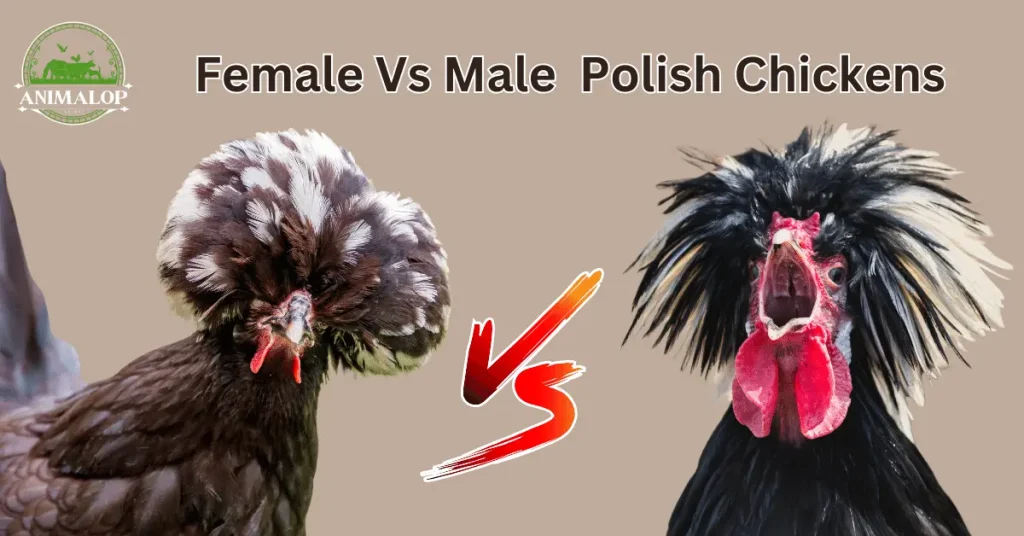
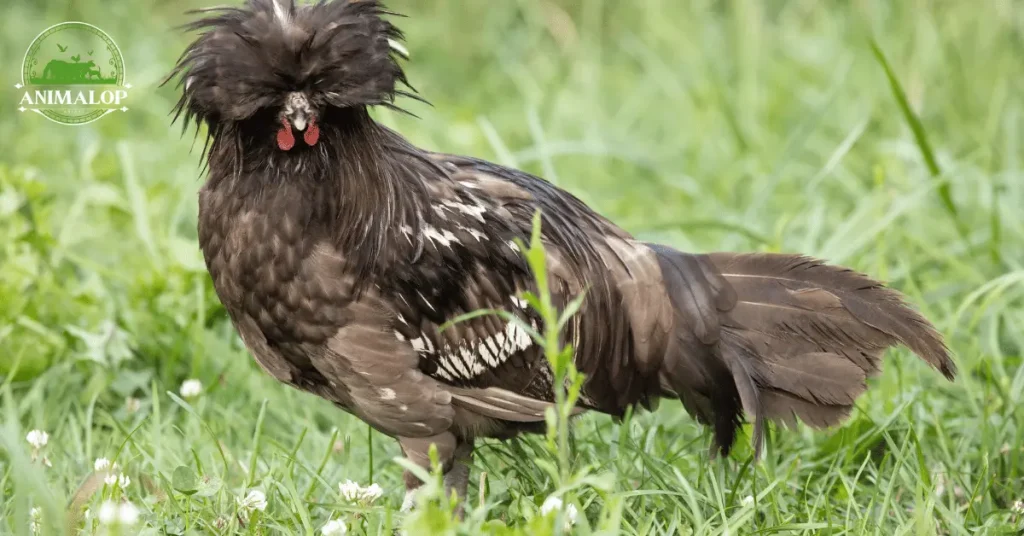
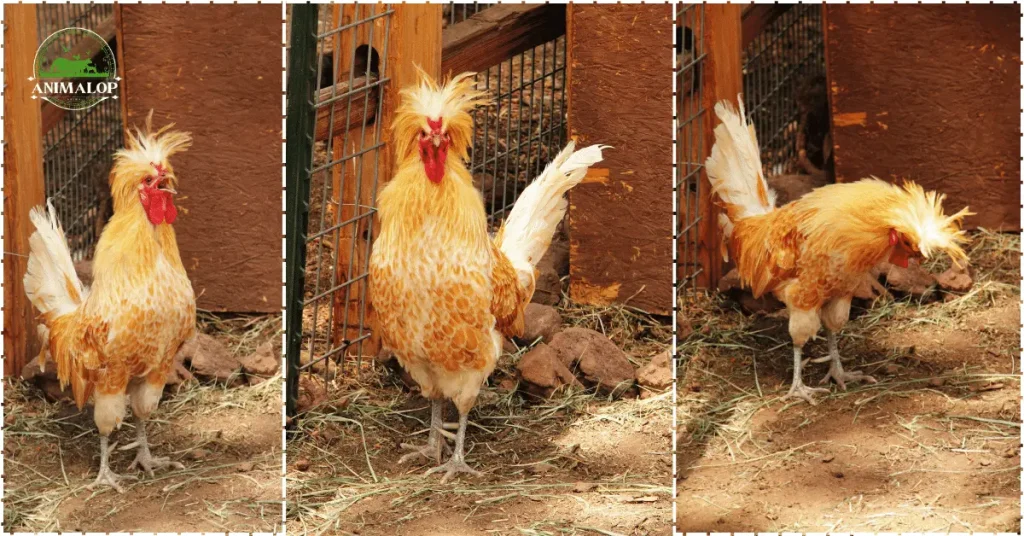
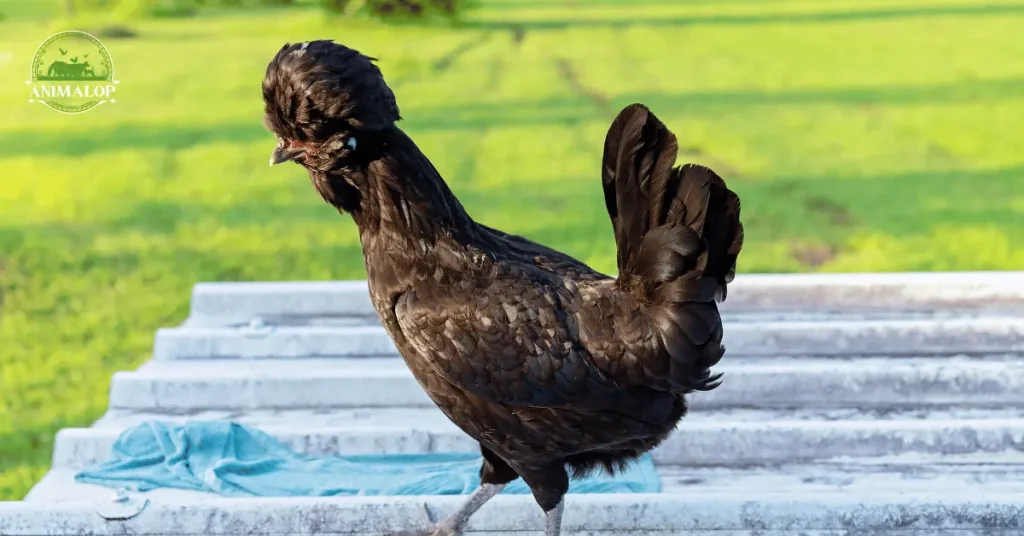
Temperament
Polish chickens are pretty chill, friendly, and like to stay active. However, they get scared easily and can act pretty nervous. This mostly happens because their big crests block their view, so they can’t see well.
People who take care of them usually talk to them when they’re nearby to avoid startling them, which could make them fly away.
These chickens have a lot of different moods. They can be super cuddly and sweet, or sometimes they seem anxious and shy, or even jumpy and loud, but they’re always fun to watch.
They often have trouble seeing because the feathers on top of their heads have grown so much that they cover their eyes.
Because they couldn’t see well, they could act scared or shy. Imagine how you’d feel if you couldn’t see well! Their poor vision can lead to some funny behaviors, like bumping into things or acting silly.
Despite sometimes being timid, they really enjoy being held and might even fall asleep in your arms, which makes them great pets, especially for kids.
They’re good at finding their own food and are fast, especially when they know treats are coming. And because they can’t see too well, they often recognize their owners by their shoes instead of their faces.
Feeding
Polish chickens eat the same food as other chickens, so you don’t need to buy anything special for them.
For baby chicks, you’d have to get 21% of the Starter Feed, which they’ll eat from the day they hatch until they’re 8 weeks old.
After they turn 8 weeks, switch their food to an 18% Grower Feed. The first egg will be laid when the chick is 8 weeks old.
When they start laying eggs, it’s time to change their food again, this time to a 16% Layer Feed.
Treats don’t have to be given necessarily, but it could be fun. Black soldier and Mealworms fly larvae could be the best treats you could find at the feed store.
Health Concerns
Water on the Brain
Unlike Whiting true blue chickens, Polish chickens can sometimes get a condition called water on the brain, or Hydrocephalus. It’s easy to miss because it might just look like the chicken is acting like goofy.
A chicken with this problem may walk backwards for a little before going back to normal, or spin around in circles and then stop.
This issue can be mixed up with another disease called Marek’s Disease, and it’s something that happens more often in chickens with big crests like Polish, Silkies, and Sultans.
Bumblefoot
Bumblefoot is another issue that’s not rare in chickens, and Polish chickens could get it more often. It happens when bacteria get into a cut on their foot.
Sometimes, sitting on high perches can cause cuts that lead to bumblefoot, but it’s also been seen passed from mother chickens to their chicks through the eggs.
You can tell a chicken may have bumblefoot if you see a black scab on their foot, or if they’re not walking much, limping, or if one foot feels warmer than usual.
For both of these problems, it’s best to talk to a vet. They ought to give you medicine to treat it at home, or they ought to need to treat the chicken themselves.
Keeping everything clean and tidy is a good way to prevent these issues, but if you start seeing any signs and aren’t sure what to do, it’s always a good idea to call your vet.
Housing
Each Polish chicken needs about four square feet of space inside their coop and fifteen square feet outside, or in their run.
Since Polish chickens can’t see very well, they’re more at risk from predators. You would have to be extra precocious to keep them safe.
The best way is to keep them in a secure area. You can use a chicken tractor (a movable chicken coop) for a bit of safe outdoor time, or have a guardian animal like a Great Pyrenees dog, a donkey, or an alpaca to help protect them.
You may also need to keep Polish chickens away from other chicken breeds because they usually end up being picked on. Luckily, they don’t mind being in a smaller space too much, and it’s actually safer for them because they can’t see well.
Polish chickens are jumpy and love to sit up high. Make sure there’s enough space for all of them to roost comfortably, with eight inches of space per chicken. A good nesting box size for laying eggs is 12×12 inches, and 1 nesting box per 3 hens ought to be provided.
Male Vs Female Polish Chickens

The males, or roosters, have crests that are more spread out and wild-looking, kind of like fireworks, while the females, or hens, have crests that are more compact and round, like a pom-pom. The males are especially eye-catching, and it’s usually the boys that grab your attention.
Polish roosters aren’t usually aggressive, but it’s hard to guarantee you’ll get a completely gentle one. My uncle once had a gold-laced Polish rooster who lost a leg in an accident but kept on going.
He was nicknamed Peg Leg Pete the Polish Pirate and managed to move around and hang out with his hens despite his injury. Being lighter probably helped him cope with having only one and a half legs, it would be much harder for a bigger chicken breed to manage that.
Polish chickens are really beautiful, and if you’re looking for a smaller rooster that won’t be as rough on the hens as a larger one may be, a Polish rooster could be a good choice.
FAQs
Final Thoughts
Polish chickens are a hit in small backyards and as show birds, known for their playful personalities and distinctive feathered “hats.” They lay a decent number of eggs, around 200 a year, but aren’t great for meat production.
Their vision is often blocked by their feathers, making them skittish and vulnerable to predators and bullying by other chickens.
Trimming the feathers around their eyes and providing them with a separate living space can help. With a bit of extra care, these chickens are a source of endless fun and affection.

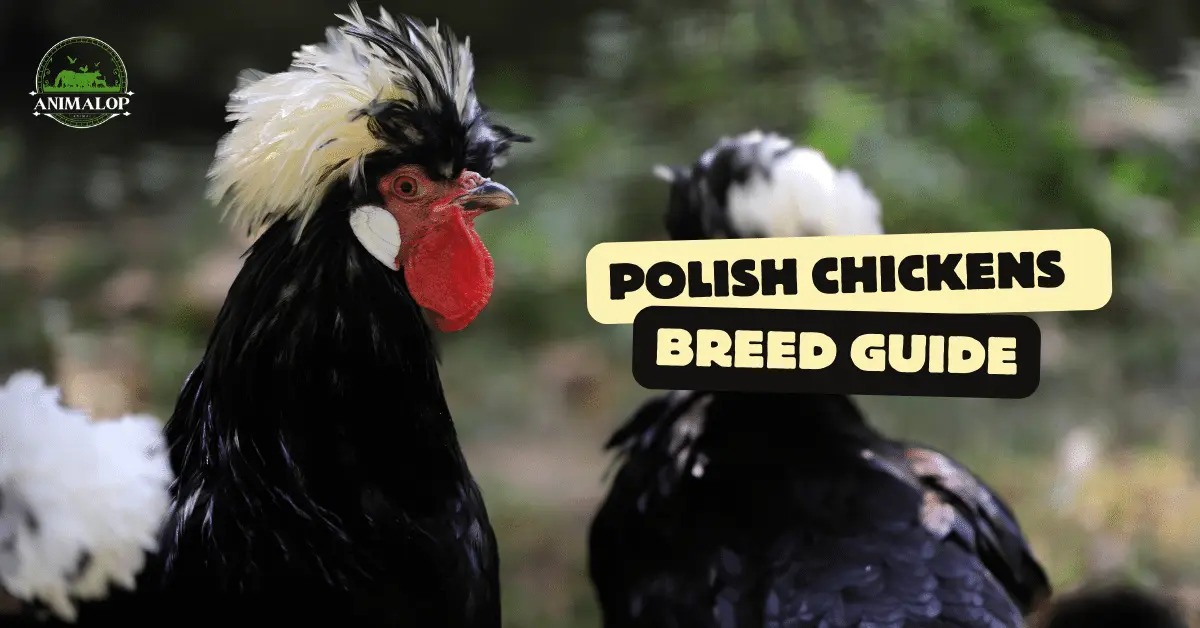
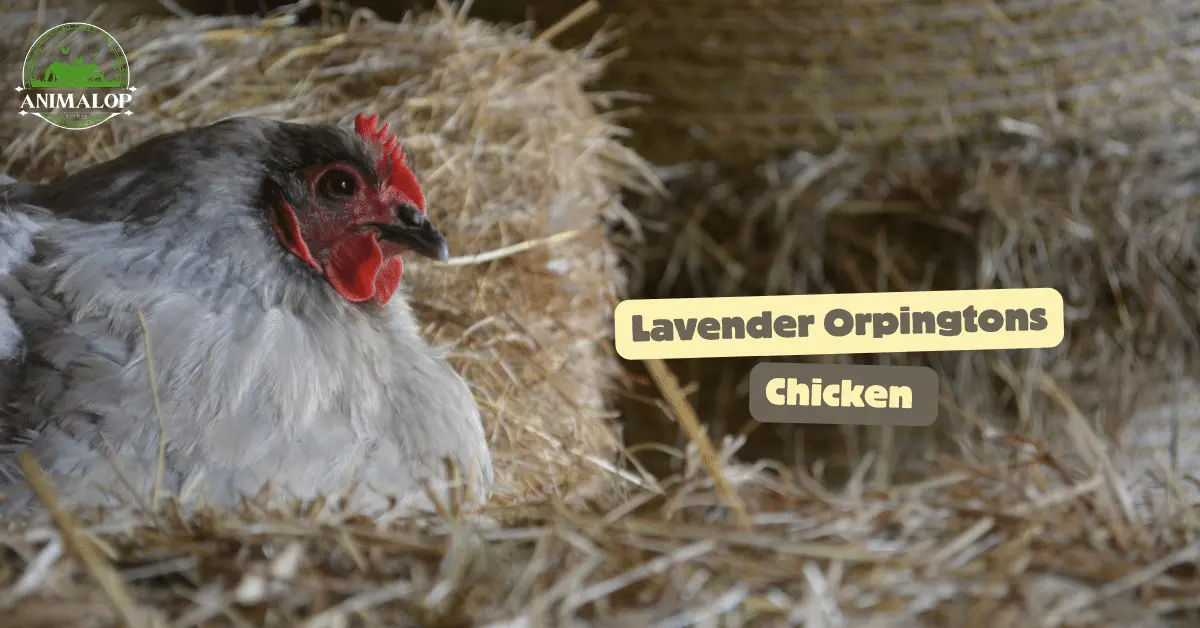
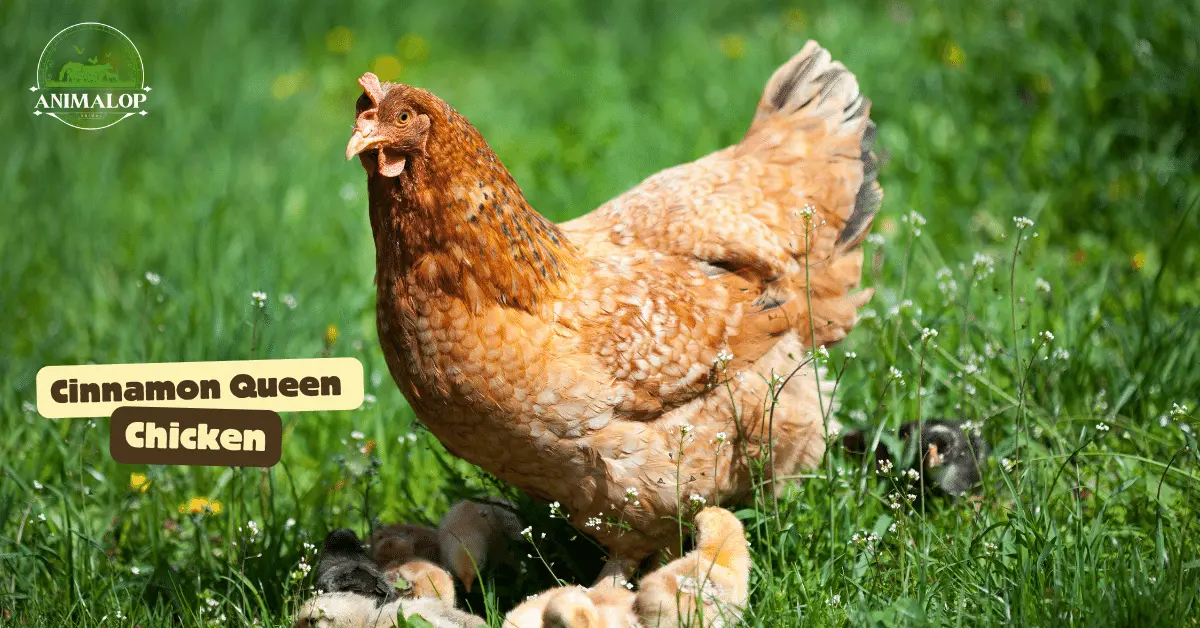
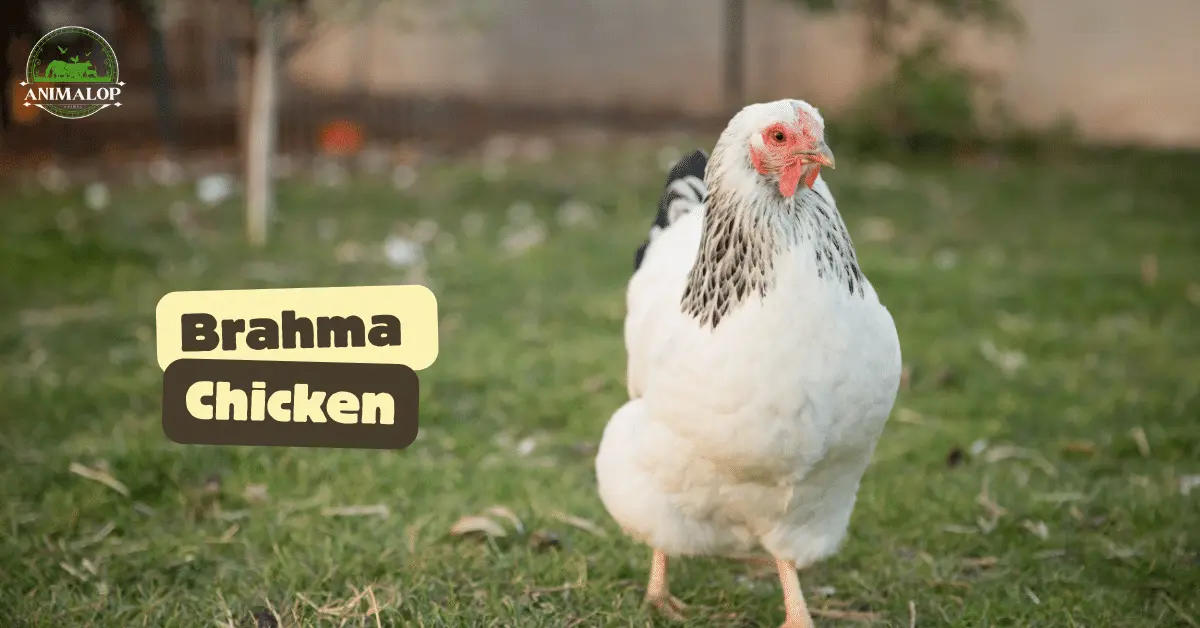
One Comment on “Polish Chickens Breed Guide 2024: Male Vs Female”